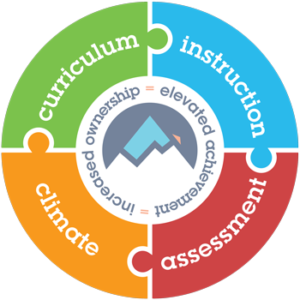Share this article.
Dear Principal,
We all can agree that this past year has not been most productive in terms of academic growth for our children. We all can agree that many of our students could have large gaps in their learning. We all can agree that learning loss recovery will be the number one focus for the upcoming school year.
However, the initiative of learning loss recovery cannot be developed, implemented, and achieved without a principal who utilizes instructional leadership. In other words, learning loss recovery needs you to develop the actions of instructional leadership.
But first, let’s clarify what we are talking about.
What Is Leadership?
If you were to look up this word you would find a myriad of definitions depending on the part of speech or how you intend to use it. But regardless of the intent or details of the wording, most definitions will identify leadership in some form or fashion as the art of inspiring a group of people toward achieving a common goal.
These definitions remind us that regardless of the business being led, leadership is linked to a goal. When asked, “What makes a great leader?” Kara Kelly, Executive Director of CompleteContents.com said,
“Ultimately, leadership is not about who is in charge. It’s about making sure your team stays focused on the goals, keeping them motivated and helping them be the best they can be to achieve those goals. This is especially true when the risks are high and the consequences matter.”
The risks are high for our students if they do not recover what they might have lost during the pandemic. The consequences matter because we cannot produce an entire generation with large learning gaps.
When we talk about leadership in the context of education, we know we are talking about the goals of learning and academic achievement.
 The Actions of an Effective Leader
The Actions of an Effective Leader
In this article, we are concerned with the practical answer to the question, “What are the actions of a principal who effectively leads a school with the outcome of learning loss recovery in order to increase academic achievement for each and every student?”
In other words, “What are the actions of instructional leadership?” For us, the actions of instructional leadership fall into four categories.
Action #1
The first action is to determine an initiative whose successful implementation will ensure learning loss recovery and increase student achievement.
For example, this initiative could be driven by the district—the development and implementation of a course scope and sequence. This initiative could be site-based—the development and implementation of a data-analysis protocol whose purpose is to discover why students are achieving as they are. This initiative could be for one department—the use of a new textbook, materials, or resources. Or this initiative could be more specific to individual teachers’ needs—instructional strategies that support the reading of more complex text.
As a principal, think of this as the curriculum of the initiative. This means you will need to know what it is, the value of it to students and teachers, and how you will know what implementation looks like at the highest level. This means you will need to articulate—as often as possible—the goals of the initiative to those stakeholders involved with implementation.
Action #2
The second action is to determine the support for the implementation of the initiative. This support should come in a variety of professional learning opportunities—the initial instruction on the initiative, demonstrations of successful implementation within and outside of the classroom, co-planning/co-teaching sessions, collaborative meetings, and opportunities to share ideas with one another.
As a principal, think of this support as the instruction of the initiative. This means you will need to develop a plan for support that takes into account the individual needs of your staff. This means you will need to articulate—as often as possible—the goals of this support to those stakeholders involved with implementation.
Action #3
The third action is to determine the monitoring system for the implementation of the initiative. This monitoring must be supportive and focused on a clearly delineated set of expectations that are understood by all stakeholders. This monitoring must include affirming and corrective feedback from a variety of sources—from you, as the leader of the initiative, from other school-site administrators, from coaches, from colleagues, and from outside experts. This monitoring must be focused on the growth of the person implementing the initiative.
As a principal, think of this monitoring as the assessment of the initiative. This means you will need to identify the timeline and process for this type of data gathering. This means you will need to articulate—as often as possible—the goals of this monitoring to those stakeholders involved with implementation.
Action #4
The fourth action is to build a community of leaders that support the implementation of the initiative. The initiative you are implementing, the support you are offering, and the success you are monitoring are too big for you to be the only leader. Thus, you need a team of stakeholders who are as dedicated to this initiative as you are.
As a principal, think of this community as the climate of the initiative. This means you must develop a plan that includes honoring and respecting the voices at your site, allows for different levels of motivation as the initiative is being implemented, and is built on the trust of all staff. This means you will need to articulate—as often as possible—the goals of this community to those stakeholders involved with implementation.
 So, What’s Next?
So, What’s Next?
You will have noticed that our focus in this article is on clarifying the actions of instructional leadership. If these actions are followed, you will be exemplifying the skills of instructional leadership, and, thus, you will be a principal who is leading a school with the outcome of ensuring learning loss recovery in order to increase academic achievement for each and every student. In other words, you will be ensuring your students are ready for the rest of their educational growth.
The Learning Brief
In this article you learned…
- The definition of leadership in the context of education.
- The 4 actions of instructional leadership.
- Ensuring learning loss recovery for students requires a principal to utilize the actions of instructional leadership.
Can you imagine building an environment full of motivated, engaged, and eager students who own their learning?
We can.

